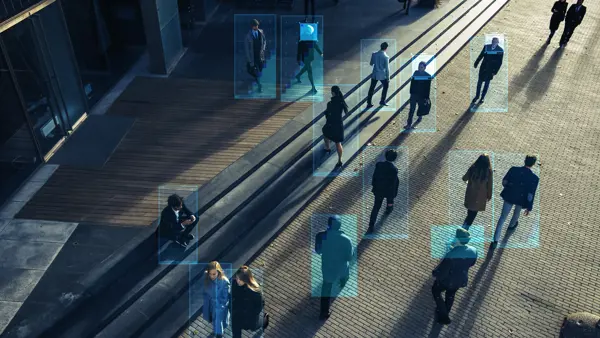Explore More Resources for Non-Profits

How Non-Profits Can Use AI to Unlock Potential and Overcome Challenges

Non-profit organizations commonly share challenges of budget and resource restraints, with work piling up faster than it can be completed. With human resources stretched thin, the opportunities to streamline mundane processes and mission-driven work through technology, such as Artificial Intelligence (AI) provide hope to advancing the sector by streamlining operations, enhancing productivity, and expanding the reach of mission-driven organizations.
In a recent webinar, Using A.I. to Streamline Nonprofit Operations, industry experts and non-profit leaders convened to explore the developing role of AI in non-profit operations. Led by Sarah Herschander, a Breaking News Reporter with the Chronicle of Philanthropy, the discussion touched on how AI is currently being leveraged in different non-profit organizations, practical advice for implementing AI into operations, and greater implications AI adoption could have on the position of non-profits within the digital innovation space.
Non-Profits Using AI Tools: A Significant Gap Remaining Between Potential and Practice
AI is already integrated into many digital tools used across all sectors, including within the non-profit space. Opening the webinar, Herschander pointed out how AI use in non-profit organizations already largely exists, however, it is still generally in the stages of experimentation. Capabilities are mainly being used to streamline mundane tasks, such as volunteer onboarding, resume screening, and grant proposal editing, only scratching the surface of its vast potential.
Herschander rationalized that factors such as lack of familiarity, funding constraints, inadequate training, and absence of organizational policies are holding organizations back from fully leveraging AI technology capability. On top of that, she noted the lack of organizational guidance on the use of such technologies, with nearly 80% of non-profits lacking an organizational wide policy for AI use.
Taking Concrete Steps Forward: Advice for Implementing AI in a Non-Profit Organization
Panelist Nick Cain, Director of Strategic Grants at the Patrick J McGovern Foundation provided practical advice for non-profit organizations who are looking to unlock the full potential of AI. Cain suggested organizations adopt a gradual integration of AI into mission-driven tasks, starting with productivity-focused tools.
To ensure a thoughtful, yet efficient integration of AI into non-profit workflows, Cain recommended that staff and leadership alike get immediate, hands-on experience with these tools instead of solely engaging in theoretical discourse about them. Furthermore, Cain emphasized that involving leadership in specific use case exploration rather than issuing broad directives can help non-profits hit the ground running.
Brandolon Barnett, Head of Innovation and Philanthropy at Giving Compass, elaborated on Cain’s words by providing valuable insights into understanding where AI could be beneficial and where it might not be appropriate. Barnett noted that while AI excels in tasks like text generation and data analysis, it falls short in areas requiring original thinking and ethical judgment.
Understanding Real-World Examples: AI Implementation on the Ground
Barnett moved on to provide practical examples for how AI is being implemented across organizations, with examples ranging from disaster response customer service workflows to supporting minority-owned businesses. He also used his own organization as a model, explaining how Giving Compass uses AI to support over 40,000 pieces of content about donor education, which attracts roughly 100,000 site users each month.
Contributing panelist Ginger Ausloos, Vice President of Technology at the Association to Advance Collegiate Schools of Business, also used her own organization as a leading example to demonstrate the practical implementation of AI, discussing the internal automation of HR and accounting tasks. Drawing from personal experience, Ausloos emphasized the importance of transforming roles and responsibilities, securing leadership buy-in, and providing comprehensive training and support for staff.
Both Ausloos and Cain stressed the importance of adopting and establishing organizational AI policies. Providing a general framework for developing organization-specific policies, Cain first suggested that employees should identify areas that could use support from AI. By understanding employee needs, a list of digital tools to be explored and implemented can be generated and categorized, based on the nature of the work and proximity of content output to the end user. Generalizable principles, such as refraining from uploading private or confidential information, should be observed across organizations.
One Size Does Not Have to Fit All: How Non-Profits Can Customize their AI Implementation
Erin McHugh Saif, Chief Product Officer on the Tech for Social Impact team at Microsoft, talked about practical ways that different non-profits, in terms of size, mission, and complexity, are leveraging generative AI functionalities through Microsoft Copilot to increase both their impact and efficiency.
- Peace Parks Foundation, located in South Africa, can be seen as a north star for AI implementation. With a smart park technology strategy that has installations of sensors and cameras throughout their reservations, Peace Parks is preventing the poaching of animals through real-time alerts and data visualization.
- Team Rubicon, a midsized non-profit assisting communities before, during and after natural and man-made disasters and crises, is leveraging AI to get boots on the ground more efficiently in the wake of a disaster, optimize their equipment stores, and broaden their fundraising reach to midlevel donors.
- Agape Source, with only three full-time employees, uses a web chat assistant to reach international students, temporary workers, and refugees, getting them linked up with their services faster.
Where Does an AI-Driven Non-Profit Sector Eventually Lead?
Addressing sentiments of concern among certain actors in the non-profit sector, panelist lead Herschander posed questions to explore AI's potential impact on the workforce. While acknowledging valid ethical concerns related to unrestricted AI use, Ausloos was optimistic about AI's role as an assistant rather than a replacement, noting that employees using AI feel more fulfilled at the end of the day, avoiding mundane tasks and being able to fully leverage their deep work capabilities.
Barnett, whose organization, Giving Compass, gave $100 to each employee to explore practical applications of different AI tools, noted that “AI is an opportunity for the non-profit sector to rethink our relationship to innovation”. He stressed that even if certain AI tools are not ultimately implemented, having staff experiment with such tools will spark conversations that ultimately drive beneficial culture change in the workplace.
Cain echoed a similar sentiment, acknowledging that AI won’t necessarily replace non-profit sector jobs, but rather transform the existing roles and responsibilities. He sees future roles as being more data-fluent and literate in digital tools, such as those driven by AI capabilities. Barnett further noted that by transforming workforces to leverage these tools, the non-profit sector can have a greater overall influence in the further development and advancement of these technologies, thereby benefitting from future applications.
AI in the Non-Profit Sector: An Opportunity To Drive Wider Digital-Based Innovations
While a growth mindset may be lacking among some actors in the non-profit space, about half of the non-profit sector is already using AI technologies to streamline basic operations. By providing real world application examples and advice for AI implementation, panelists from the webinar made a clear case for now being the time for non-profit organizations to be bold.
By fully embracing the exploration of such technologies, such as through establishing organizational AI use guidelines, and introducing policies that drive innovation from the bottom up, organizations can identify other key opportunities to grow and evolve within the emerging digital technology space at large.

Unlock AI for Your Non-Profit
Is your non-profit interested in exploring AI but unsure where to start? HSO offers an AI Briefing tailored for non-profits, helping you understand and implement AI effectively. Our experts will guide you through AI's benefits and applications, enhancing your fundraising, engagement, and program delivery.
